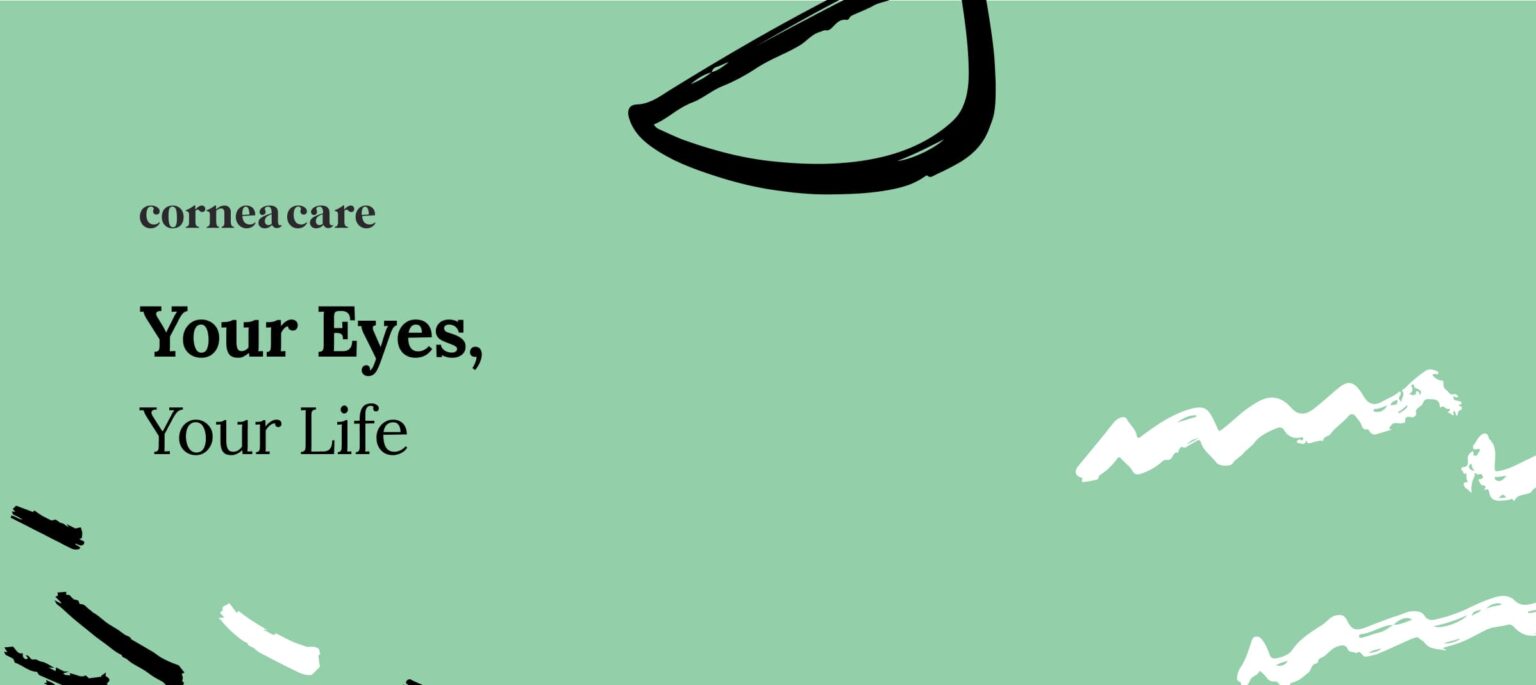Dry eye disease patients report a lower health-related quality of life, studies find. In this article, we learn how researchers study the impact of dry eye disease on quality of life, and what conclusions they’ve made.
Experts report that dry eye disease (DED) is a growing public health concern. The condition causes ocular symptoms such as discomfort, fatigue, and visual impairment that impact the sufferer’s quality of life (QoL) in a number of ways. DED is found to negatively impact aspects of a patient’s physical, social, and mental functions, as well as daily activities and performance at work.1
Key Points
- Studies show the impact of dry eye disease on quality of life.
- Reduced vision and falls are key factors for patients reporting poor quality of life with dry eye disease.
- Lifestyle changes and eye care treatments can improve symptoms and quality of life.
Taking the First Step
Dry eye disease (DED) is one of the most prevalent eye conditions in the world. Reports state that the prevalence of dry eye disease ranges from around 5% to as high as 50% in adults 50 and older across the globe. In the US alone, modest estimates report that 30 million adults suffer from dry eye symptoms, of which 5 million likely have moderate to severe dry eye disease.1
It can be difficult to quantify the entire impact of dry eye disease on a person’s quality of life (QoL). Researchers continue to develop new evaluation modalities to help measure the impact. With techniques for measuring impaired vision and patient questionnaires, researchers are beginning to better understand the full impact dry eye disease can have on different areas of a patient’s quality of life.1
What is Dry Eye Disease?
To best understand the findings of the studies discussed in this article, let’s start with a review of dry eye disease.
Dry eye disease is a common condition, and often the reason older adults seek out a healthcare provider. Women and adults over 50 are most commonly affected, though dry eye disease can be found in people of any age.
Symptoms of dry eye disease include ocular pain, burning, redness, blurred vision, foreign body sensation, and crusty eyelids.2
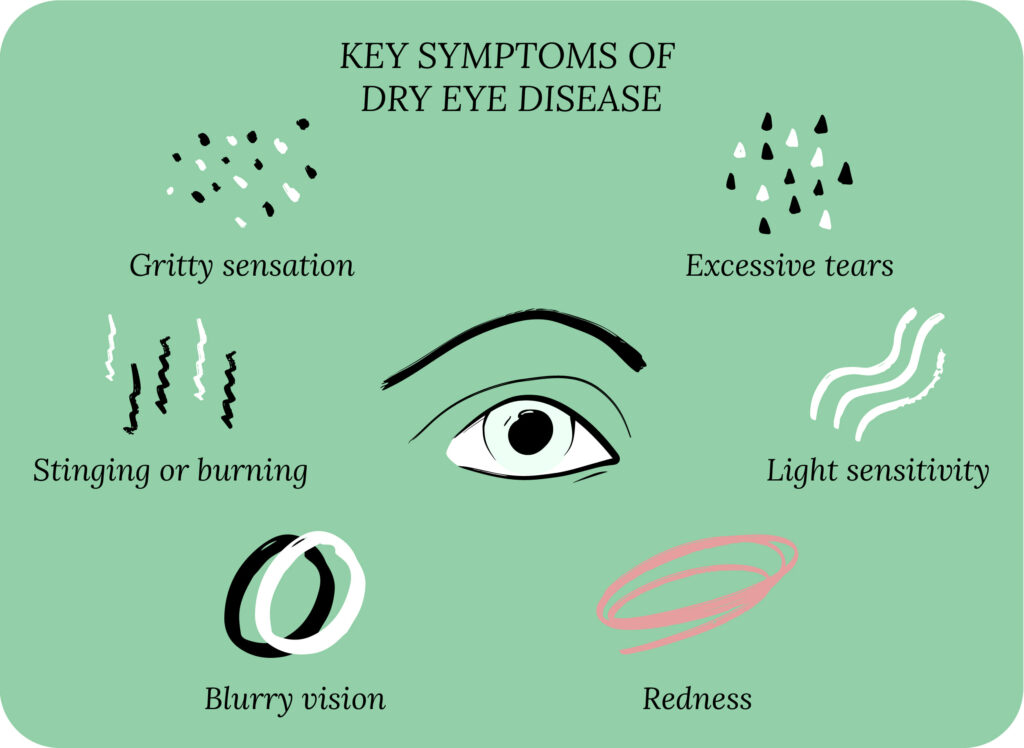
Also known as keratoconjunctivitis sicca, ocular surface disease, and dry eye syndrome, dry eye disease is caused by an unstable tear-film and inflammation.3
Types of Dry Eye Disease
There are several causes of dry eyes that fall under two main categories: decreased tear production and rapid tear evaporation.
With decreased tear production (aqueous deficient DED), your eyes don’t produce adequate tears to keep the eye surface, including the cornea, lubricated. This type of dry eye disease is often related to the following risk factors:
- autoimmune conditions such as Sjögren’s syndrome, rheumatoid arthritis, and sarcoidosis
- medical conditions such as diabetes, high blood pressure, cancer, thyroid problems, and menopause
- side effects from oral medications including antihistamines, decongestants, antidepressants, beta-blockers, diuretics, and oral contraceptives

With evaporative DED, you have enough tears but they evaporate too quickly due to an unstable tear film. Evaporative dry eye disease is often caused by:
- contact lens use
- LASIK eye surgery
- (MGD) meibomian gland dysfunction (clogged oil glands in your eyelids)
- blepharitis (eyelid inflammation)
- rosacea
- eye infections (corneal ulcers)
- eye conditions (corneal transplant and glaucoma)
- damaged to the ocular surface from prolonged use of eye drops with preservatives
Impact of Dry Eye Disease on Quality of Life
Thanks to the work of researchers, there is a growing number of improved techniques that help measure the impact of dry eye disease on quality of life (QoL) in dry eye patients. Most significant is a better understanding of how dry eye disease interferes with vision.
While standard testing techniques fail to show these abnormalities, new dry eye questionnaires and more sensitive testing are able to measure what’s really going on. Results of these tests are contributing to a growing body of evidence showing visual disturbances such as blurred or foggy vision, fluctuating vision, and glare are commonly reported among dry eye disease patients.1

In addition to self-reported visual impairment, researchers can now understand how dry eye disease impacts a person’s daily living and quality of life in so many other areas. Patients report impacts to their social life, mental health, productivity on the job, as well as physical discomforts. Clearly, the studies on vision-related quality of life indicate that dry eye disease impacts far more than the eyes.1
Dry eye patients report physical pain and discomfort, similar to sufferers of chronic pain syndrome. This chronic eye condition causes both physical pains as well as negative effects on everyday quality of life.1
How Impact of Dry Eye Disease on Quality of Life is Measured
According to ophthalmologist Laura M. Periman, MD, there are a number of questionnaires that can be used to measure the impact of dry eye disease on quality of life. These include the SPEED (Standard Patient Evaluation of Eye Dryness Questionnaire), OSDI (Ocular Surface Disease Index), and the IDEEL (Impact of Dry Eye in Everyday Life).4
Such questionnaires are a valuable tool to measure progress during treatment of dry eye disease by quantifying its impact on a patient’s work productivity, social relationships, mobility, and other daily activities.
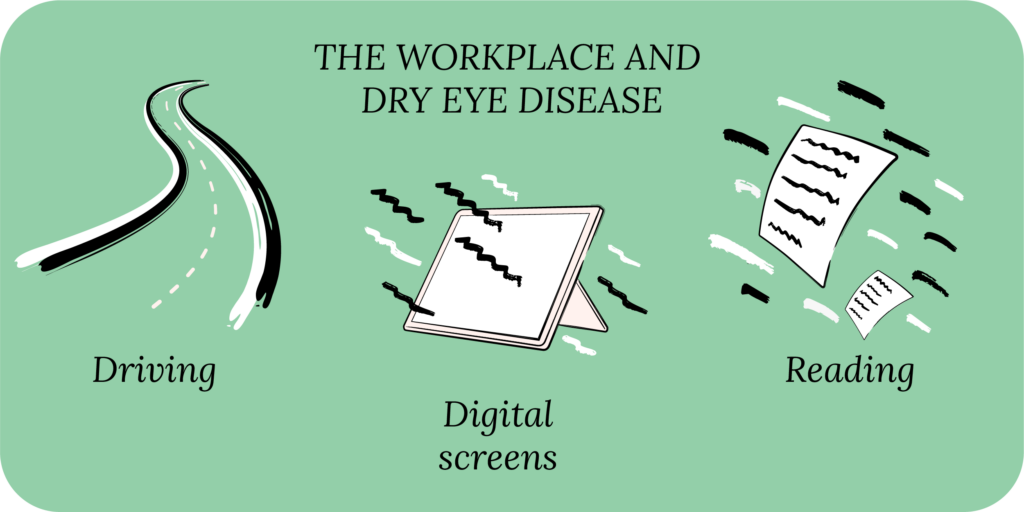
The Singapore Study
The British Journal of Ophthalmology published a 2021 report showing the relationship between dry eye disease and poor general health-related quality of life. It appears the association is due to reduced visual quality and the occurrence of recent falls.5
Researchers performed a cross-sectional study to determine how dry eye symptoms affect quality of life. In the study, researchers considered the symptoms experienced by dry eye patients and how they scored on the visual function questionnaire. The statistical model used considered demographic and socioeconomic factors, as well as comorbidities. Ocular and system examination results were also taken into account.
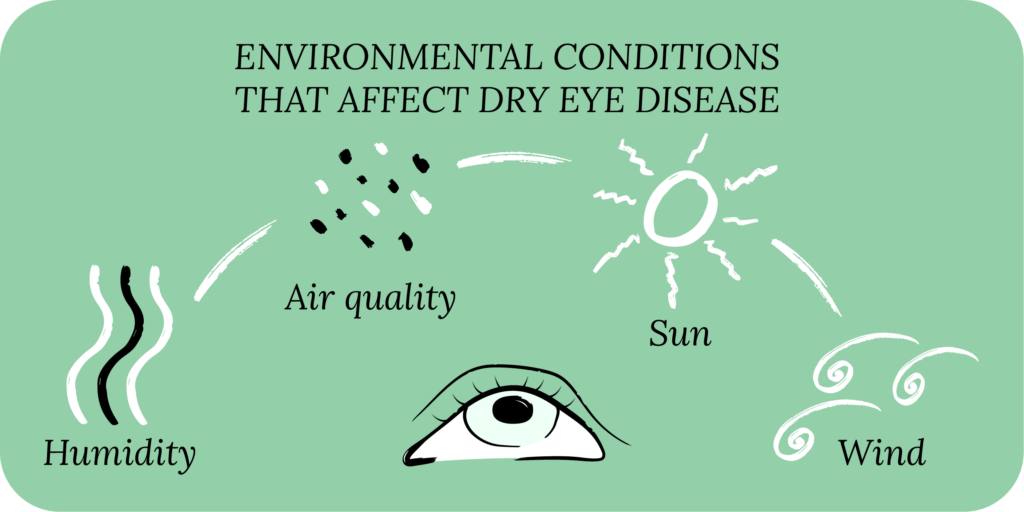
With a total of over 7,700 participants, the team found that people with dry eye symptoms reported a much lower quality of life than those who do not suffer from dry eye disease.5
The researchers concluded that “efforts to reduce severity of dry eye symptoms are essential to optimize patients’ overall functioning and well-being.”5
The UK Study on Dry Eye Disease and Quality of Life
The 2014 study at the University of Southampton in the UK, looked at the effect of dry eye disease on adults in the UK. The study included 1000 dry eye patients and 1000 adults without the condition.
Researchers used online surveys and visual function questionnaires from the National Eye Institute, alongside a QoL questionnaire on health-related quality of life.6
The results of the 2014 study indicated that patients with dry eye disease reported a lower quality of life as compared to adults without dry eye symptoms. Dry eye patients experienced visual impairment and related mobility issues. According to the findings, the participants with dry eye disease also reported more anxiety and depression.6
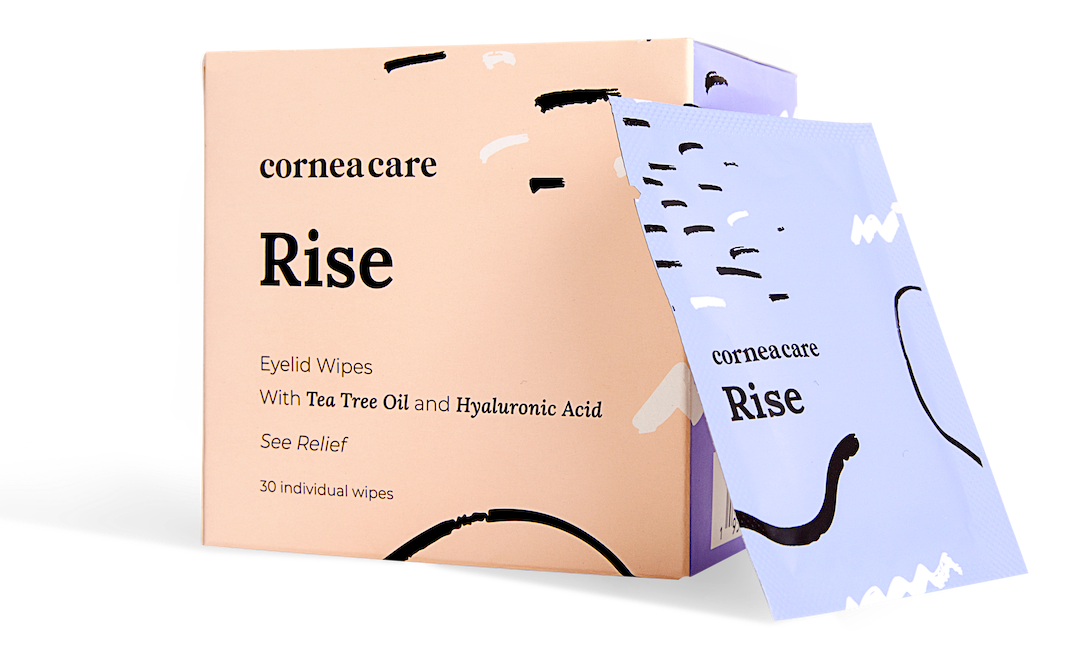
Rise
Eyelid Wipes
Perfect for eye dryness, itching, burning, and crusting/flaking of eyelashes. Free shipping 📦
Try today - $25
Participants with severe dry eye symptoms reported a greater negative impact on their work productivity, mental health, and daily social life.6
While both participant groups reported equal amounts of screen use, the group with symptoms of dry eye disease also reported exposure to environmental triggers including air pollution, forced heat, and air conditioning, known to contribute to dry eye symptoms.6
The Southampton study demonstrates that dry eye patients suffer lower quality of life with impacts on their vision, daily activities, and work productivity.7
Study Compares Dry Eye Disease and Heart Disease Impacts on Quality of Life
A 2003 study led by Rhett Schiffman, MD, MS, MHSA, measured the quality of life of heart disease patients and compared it with the impact of severe dry eye disease on quality of life. The research found the impact very similar.8
What’s Next
Learn to love your eyes! Read more eye health and wellness tips on our blog.


